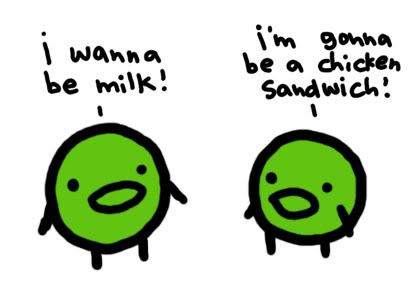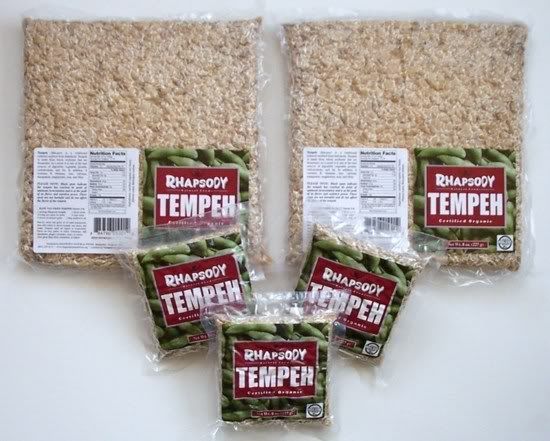MEAT ALTERNATIVES
INSTEAD OF MEAT:
Explore the world of TOFU.
Made from soybeans, TOFU is very high in protein; the firmer it is, the higher the protein content and the less water it contains. When processed with calcium sulfate, tofu is a good source of calcium. Tofu is one of the most versatile foods available for vegetarians.
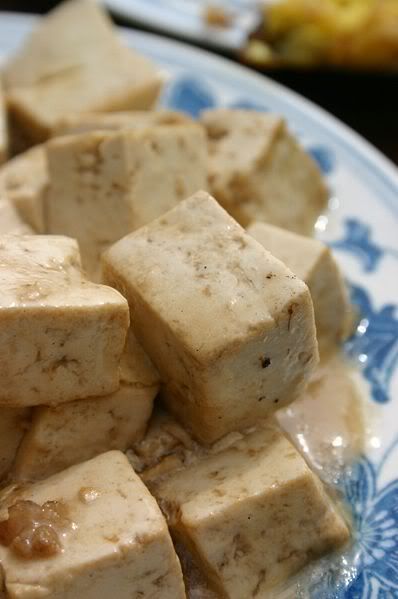
Prepare TOFU in any of the following ways: marinate, sauté, steam, grill, braise, roast, bake, boil, stir-fry, deep fry, mash, blend, or puree in the food processor. You can make an outstanding vegetarian chili with textured vegetable protein (a defatted soy protein) that tastes just like the real thing.
*Recipe on link below
Notice other meat alternatives in the deli case of your natural food market.
SEITAN, made from wheat gluten, is high in protein and can lend a meat-like texture to many dishes. SEITAN can be sliced, ground, chopped, or diced and will readily absorb definitive seasonings when cooked in a stir-fry, a casserole, or in a well-seasoned sauce.
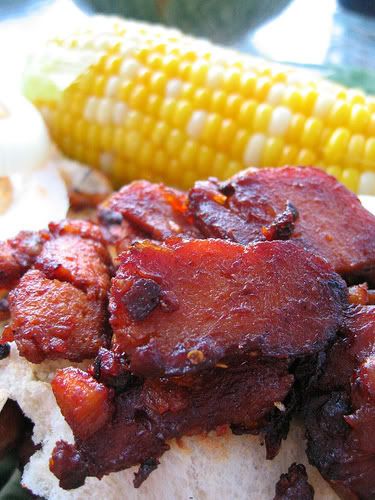
TEMPEH is a fermented soy-bean cake that improves with marinating and makes a hearty high-protein substitute for meat. It can be baked, broiled, chopped, shredded, sautéed, stir fried, and braised. TEMPEH is an excellent addition to casseroles, pastas, stir-fries, salads, wraps, soups, and ethnic dishes like tacos, burritos, chili, sushi, and curries. Try marinating chopped TEMPEH and adding it to a pita sandwich along with chopped or shredded veggies and your favorite dressing.
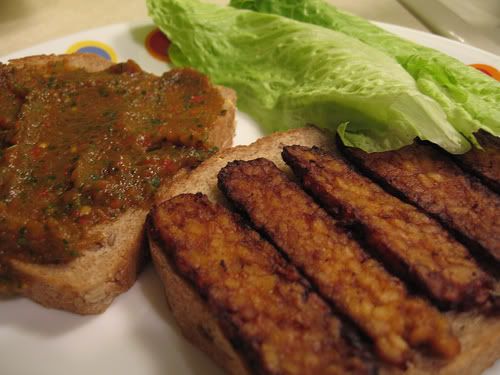
NUTS AND SEEDS are excellent meat replacements, high in protein, fiber, essential fatty acids, and vitamin E. Nuts are an outstanding source of minerals, including calcium, iron, zinc, and copper. A serving of two ounces of nuts several times a week lowers the risk for heart attack, diabetes, and gallstones, and lowers total and LDL cholesterol. Make sure the NUTS AND SEEDS you purchase are raw, not roasted in oil or salted. To keep them fresh for several weeks, refrigerate them to prevent rancidity.
INSTEAD OF BEEF BROTH:
Choose low-sodium canned or packaged vegetable broth or create your own flavorful broth with a base of vegetables and water.
To season the broth, add a small amount of .. TAMARI, BRAGG LIQUID AMINOS, or low sodium SOY SAUCE, a dash of red wine, a clove of garlic, perhaps a squeeze of fresh lemon juice, and season with your favorite herbs, salt, and pepper.
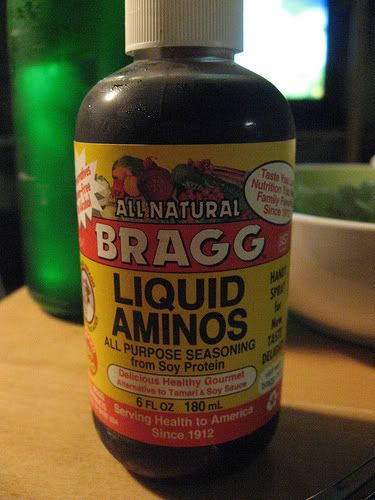
To turn the broth into GRAVY, thicken by combining equal parts of cornstarch or arrowroot and water (about 2 tablespoons each for 2 cups broth) and stirring into a smooth, runny paste. Add the paste to gently simmering broth a little at a time, stirring constantly for about one minute, or until thickened to desired consistency.
VEGETABLE BOUILLON CUBES in imitation beef flavor are easily dissolved in boiling water to create a quick beef flavored broth. Plant-based POWDERED BEEF FLAVORING is also a quick method for making beef broth. Both are available in natural food markets. Look for low-sodium options.
INSTEAD OF HAMBURGERS:
Awaken to the joy of VEGGIE BURGERS made from soy protein. They won't really fool you into believing they are beef, but they sure are impressive substitutes.
Enjoy your VEGGIE BURGER on a whole-grain hamburger bun or tucked into a pita with all the usual fixings like lettuce, tomato, onion, pickles, ketchup, and mustard, and top it with a slice of vegan cheese, if desired.
You won't miss the beef!
Several vegetarian companies are employing SOY PROTEIN to create HAMBURGER-STYLE PATTIES. Check the frozen food section of your local market or the natural food market to discover an array of vegetable patties to slip into your burger bun. Try them all to find your favorites.

Here are some brands to look for: Wildwood Tofu Veggie Burgers, Maui Taro Burgers, Amy's Texas Burger, Natural Touch Vegan Burger, Boca Burger Vegan Original, Gardenburger California Burger, Gardenburger Flame Grilled.
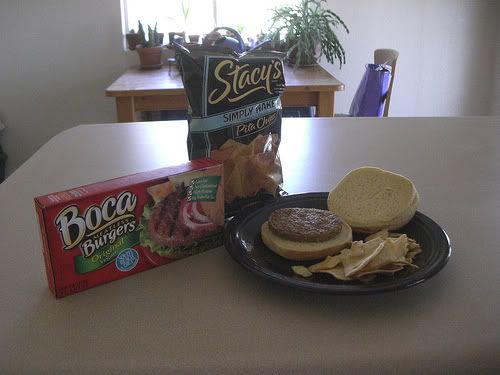
INSTEAD OF HOT DOGS:
VEGETARIAN HOT DOGS made from SOY PROTEIN are produced by several food manufacturers. Many are fat free. Explore the different brands to seek out the one you like best, tuck it into a whole-grain hot dog bun with all your favorite fixings, and enjoy a cholesterol-free meal low in saturated fat. You can even shred some VEGAN CHEESE into the bun for an extra special treat.
Some brands to look for include: Lightlife, Yves Veggie Cuisine, and Tofurky.
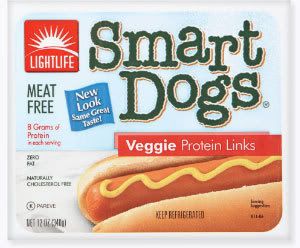
INSTEAD OF GROUND BEEF:
Choose TEXTURED VEGETABLE PROTEIN, often referred to as TVP, to make comfort foods like Sloppy Joe's or Chili without the "Carne." TVP is available in tidbits of dried and defatted soybean meal that is highly refined. Once rehydrated, TVP resembles the texture of ground beef. Almost anything you make with ground beef can be recreated with TVP. Simply pour boiling water or vegetable broth over the dried, minced soy protein, and in 5 minutes it will be ready to add to stir-fries, stews, casseroles, sauces, and soups. With a little kitchen magic and a good recipe, you can even form the TVP into a soy patty. Though the TVP has no flavor of its own, it absorbs any seasonings you add. For best results, cook the TVP in well-seasoned sauces with a tomato base, chili, or flavorful marinades.
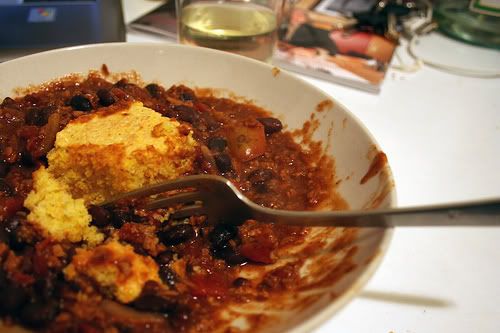
INSTEAD OF LUNCHMEAT:
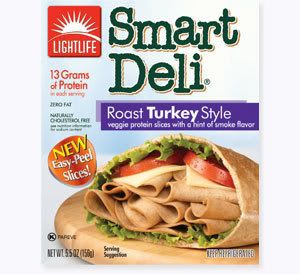
Explore the many SOY BASED LUNCHMEAT ALTERNATIVES made by Yves Veggie Cuisine, Tofurky, or LightLife.
Some are very low fat, some even fat-free. Many of these alternatives contain wheat gluten, an excellent source of protein. As an added benefit, many of these replacements have fat content as low as .5 grams per serving. You may be delighted to learn that you can find soy- and gluten-based alternatives for sliced PIZZA PEPPERONI, BACON, CANADIAN BACON, TURKEY, SALAMI, BALOGNA, and even HAM.
INSTEAD OF SAUSAGES:
Venture into the land of GIMMELEAN, a one-pound chub that comes in sausage or beef flavor. Made by LightLife, this product is fat-free and can be sliced into patties and browned lightly in one tablespoon of oil. For a great start to the day, use these SAUSAGE PATTIES for breakfast along with some whole-grain bread and fresh fruit. It's quick, delicious, and nutritious.

Made from soy and wheat gluten, GIMMELEAN offers flavors and textures that are superbly satisfying. It freezes well and keeps for several days in the refrigerator. GIMMELEAN can also be crumbled into a stir-fry or formed into "meatballs." For meatballs, add breadcrumbs and any of your favorite seasonings and brown in a small amount of vegetable oil.
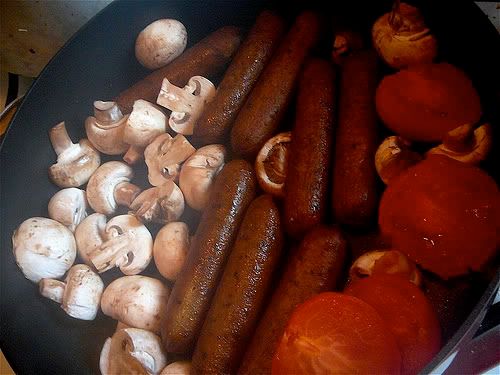
INSTEAD OF CHICKEN:
Explore the multitude of frozenchicken substitutes made from SOY PROTEIN and WHEAT GLUTEN.
Tastes and textures are very close to the real thing, and you benefit from a reduced intake of saturated fat and eliminate the cholesterol altogether.
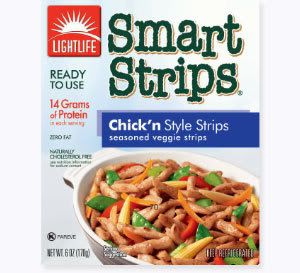
LEGUMES include the whole arena of beans, lentils, and split green or yellow peas and are delicious, high-protein alternatives to animal products. Begin by choosing one night a week to prepare a dish that features LEGUMES as the centerpiece of your meal. Build a special dish by combining your beans with vegetables and your favorite seasonings or sauces, and come away from the table feeling comfortably full rather than heavy and overstuffed.
As you become more accustomed to plant-based foods, you may enjoy two or three nights or even whole days of eating completely vegetarian.
The varieties of BEANS are numerous and each one has a uniquely different taste and texture. Explore black beans, garbanzo beans, pinto beans, lima beans, fava beans, kidney beans, black-eyed peas, great northern beans, navy beans, yellow and green split peas, and lentils of many colors and sizes. These are only a few--the list contains many more colorful bean varieties.
For information on cooking legumes, see Cooking Grains and Beans
INSTEAD OF CHICKEN BROTH:
Purchase a VEGETARIAN IMITATION CHICKEN BROTH, available in powdered form that can be dissolved in water. Alternatively, create your own beginning with two or three cups of water. Add a dash of soy sauce, some nutritional yeast, a touch of lemon juice, and season with salt and pepper. For a creamy style broth, add some soy milk. To turn the broth into GRAVY, stir together equal parts of cornstarch or arrowroot and water (about 2 tablespoons each for 2 cups liquid) into a smooth runny paste. Add the paste a little at a time to gently simmering broth, stirring constantly for about one minute, or until thickened. Simmer gently for one minute longer.
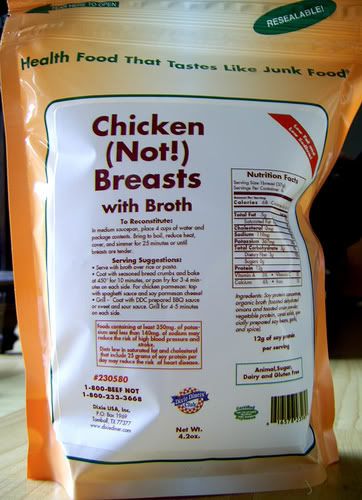
INSTEAD OF FISH:
Many Asian markets will have FISH FLAVORED SOY PROTEIN in the freezer section. Innovatively created to even look like the real thing, several varieties come in fish-steak slabs with nori seaweed wrapped around the outer edge to resemble the skin of a fish. However, it is important to read the ingredient labels very carefully.
Some of the imitation fish may contain whey or casein, milk protein used as binders.
(I cant seem to find this one if anyone does please send me the link)
DAIRY ALTERNATIVES
*These are just suggestions and tips
INSTEAD OF BUTTER:
On your bread or toast
Enjoy the richness of spreading one-fourth of a ripe AVOCADO on your bread or toast. Historically known as midshipman's butter, it was used in England's Royal Navy in the 1800's. It's creamy, delicious, and offers naturally beneficial fats.
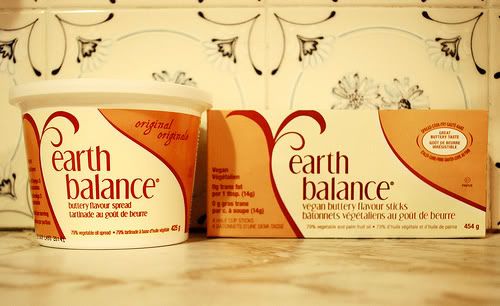
Other bread spread alternatives include NUT BUTTERS (peanut, almond, macadamia, or cashew). Purchase brands that contain only roasted nuts. Avoid those with unnecessary ingredients like sugar, salt, and partially hydrogenated oils. Nut butters are delicious and healthful high-protein sources.
Consider SEED BUTTERS made from roasted sesame seeds or sunflower seeds. TAHINI (sesame seed paste) is a good source of calcium and tastes great on whole grain pita bread or crackers.
If the TAHINI seems a little bland, try a light sprinkle of salt or herbs such ground cumin, just as the ancient Romans did. SUNFLOWER SEED BUTTER is available in plain or flavored varieties.
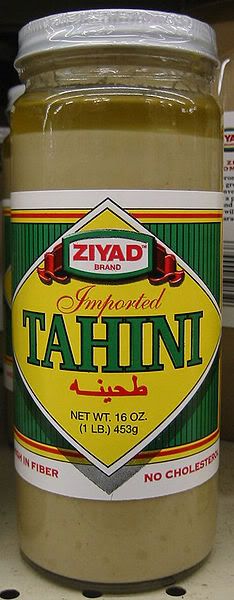
Explore the world of tasty FRUIT BUTTER is a delicious spread easy and quick to prepare at home. FRUIT BUTTERS can also stand in for jam or jelly on nut butter sandwiches.
*Recipe on link below
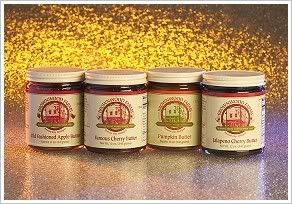
HUMMUS, a tasty Middle Eastern dish made from garbanzo beans, offers yet another healthy alternative to spread over breads, toast, crackers, or even whole-grain pita bread.
*Recipe on link below
FAVA BEANS provide the base for an exceptionally tasty spread that is easily prepared in a food processor with a minimum of ingredients.
*Recipe on link below
On your sandwich
Any of the TOFU or BEAN SPREADS shown below in the recipe section are ideal on sandwich breads. They make tasty, nutritious fillings along with lettuce, onions, tomatoes, pickles, or any of your favorite sandwich add-ins.
Cooking, Sautéing, and Baking
When sautéing vegetables, replace unhealthy fasts like butter, with water, vegetable broth, or wine. Create your own homemade tasty broth by adding a little low-sodium soy sauce, and a dash of vinegar, lemon, or lime juice to water or vegetable broth. Add your favorite herbs and seasonings and enjoy.
Switch to EXTRA VIRGIN OLIVE OIL, COLD PRESSED ORGANIC CANOLA OIL, or UNREFINED PEANUT OIL in small quantities, such as one or two tablespoons, when sautéing. For health considerations, the less oil used, the better. Though these three oils mentioned are high in monounsaturated fats (peanut oil is high in polyunsaturated fast), they do contain some saturated fat, a concern when preventing or reversing heart disease.
For baking pies, cakes, cookies, and quickbreads, choose SOYMILK to top your hot or cold cereal. The many varieties of SOYMILK offer plenty of options. You can find them unsweetened, lightly sweetened, very sweet, vanilla flavored, chocolate flavored, and fortified with calcium, vitamin D, and vitamin B12.
You can also enjoy RICE MILK, OAT MILK,MULTI-GRAIN MILK, and ALMOND MILK, or make your own nut milk in just a few seconds in the blender.
*Recipe on link below
For drinking
WATER is nature's top choice for drinking. Enjoy several glasses a day.
With so many brands of MILK SUBSTITUTES available, it's easy to discover some favorites. When searching for variety, choose SOYMILK, RICE MILK, OAT MILK, and ALMOND MILK. Each one is light and pleasing. Be sure to read labels carefully. Some of these alternative milks are rather high in sugar.
PURE FRUIT JUICES that are truly 100% juice provide a pleasant change from water. To avoid consuming excess sugar, limit yourself to one glass a day, especially if you are watching your calorie intake.
A cup of hot or iced HERBAL TEA can be a refreshing beverage any time of day. COFFEE SUBSTITUTES offer pleasant beverage alternatives and are caffeine-free. Most are made from natural ingredients like roasted barley, chicory, and rye.
In your hot beverages
Switch to MILK SUBSTITUTES in your HOT CHOCOLATE, HERBAL TEA, COFFEE SUBSTITUTES, or other hot beverages.
Cooking
Switch to SOYMILK for making tasty cream sauces. Use SOYMILK with a lower fat content for more delicately flavored cream sauces with a hint of sweetness. For a rich, savory cream sauce, use unsweetened SOYMILK. Even with its richness, it will only have half the saturated fat content as whole milk. To thicken the sauce, add one or two tablespoons of cornstarch or arrowroot mixed with equal amounts of water to two or three cups of gently simmering sauce, stirring constantly for about one minute until thickened. Simmer one minute longer to thoroughly incorporate the thickener.
To create cream sauce with a delicate cheese flavor, add a tablespoon or two of VEGETARIAN SUPPORT NUTRITIONAL YEAST FLAKES (contains vitamin B12) along with any seasonings like dried or fresh herbs and spices to the soymilk. Then bring the sauce to a simmer and thicken, if desired.
Consider RICE MILK, OAT MILK, SOYMILK, vegan VEGETABLE BROTH, and HOMEMADE NUT MILKS as alternatives to dairy products for sauces, creamed soups, and braising liquids. Each will offer pleasing flavors and textures. Experiment to discover your favorites. You'll still enjoy richness in flavor while lowering your intake of saturated fat.
Salad Dressings
Make your favorite creamy salad dressings with unsweetened SOYMILK. For a thicker dressing, place a package of SOFT SILKEN TOFU into the blender with your favorite seasonings. Add a splash of tang with lemon juice, lime juice, or any variety of vinegar: apple cider, red or white balsamic, rice, raspberry, or red or white wine.
*Recipe on link below
Other blender dressing suggestions begin with a base of cashews, macadamias, Brazil nuts, pecans, or pine nuts and include your favorite seasonings. Consider fresh vegetables or fruits as a delicious base for tasty salad dressings. Tomatoes, red bell peppers, zucchini, or cucumbers as well as fresh fruits like oranges, tangerines, peaches, plums, nectarines, apricots, cherries, berries, and cranberries all add uniqueness to a salad dressing.
For Baking
In place of buttermilk use 1 cup of SOYMILK stirred with 1 tablespoon distilled vinegar or lemon juice. The combination does the same job of lightening and leavening a batter as the dairy version.
Desserts
Switch to frozen desserts made from SOYMILK OR RICE MILK. These include vegan ice cream, yogurt, and sorbet. There are many brands that offer exceptional flavors. Enjoy the exploration for your favorites.
SO DELICIOUS, PURELY DECADENT, RICE DREAM are some brands to consider.
If you have an ice cream maker, you can prepare endless varieties of exceptional homemade ice cream with nuts and nut milks. Try ALMONDS, HAZELNUTS, PECANS, CASHEWS, WALNUTS, MACADAMIAS, BRAZIL NUTS, OR COCONUT along with fresh fruits in season. VICE CREAM by Jeff Rogers offers a banquet of vegan recipes for making homemade ice cream; some are even raw.
Foods prepared at home have a special touch.
Make your own delicious mousse or parfait desserts with fresh fruits and SILKEN TOFU or SOYMILK. See recipe below.
Yogurt
SOY BASED YOGURTS come in a myriad of delicious flavor choices. Your local natural food market offers a number of different brands that vary in taste, texture, and sweetness. For plain, unsweetened soy yogurt, choose Wildwood.
INSTEAD OF CREAM CHEESE:
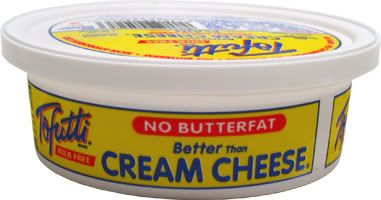
SOY-BASED VEGAN CREAM CHEESE alternatives taste remarkably like the real thing.
FOLLOW YOUR HEART, TOFUTTI BETTER THAN CREAM CHEESE, and SOYMAGE are some brands available. For some fresh new ideas, you may want to switch to one or more of the SOY SPREADS that you can prepare at home.
*Recipe on link below
INSTEAD OF SOUR CREAM:
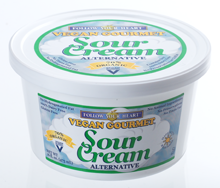
Purchase a dairy-free, SOY-BASED SOUR CREAM or make your own low-fat version in just a few seconds in your food processor.
FOLLOW YOUR HEART, SOYMAGE, and TOFUTTI SOUR SUPREME are some of the brands available. Use your soy sour cream over fruit salad, as a garnish for soups, on potato latkes, on baked potatoes, or as a base for party dips. Homemade sour cream is quick and easy to make.
*Recipe on link below
INSTEAD OF DAIRY-BASED HIGH-FAT CHEESE:

Switch to a VEGAN CHEESE such as FOLLOW YOUR HEART, CHEEZL, SHEESE, SOYMAGE, GALAXY RICE CHEESE, and VEGANRELLA. Occasionally, newer brands enter the marketplace. Though the textures of vegan cheeses will differ from familiar dairy-based cheese, you will appreciate the lower fat content and healthier plant-based alternatives without cholesterol.
EGG ALTERNATIVES
INSTEAD OF EGG SALAD:
Purchase MOCK EGG SALAD made from tofu or prepare your own version from an easy, basic recipe below with regular or firm tofu. Alter the seasonings or add your own special touch and it becomes your original creation.
*Recipe on link below
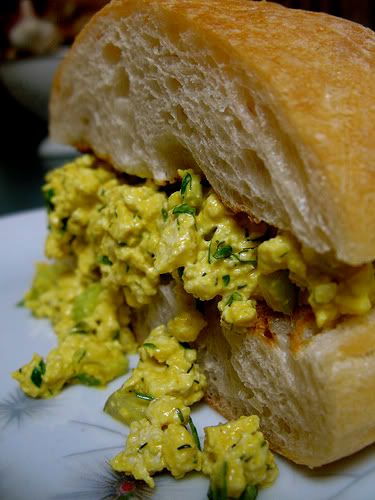
Cooking -- Imitation Scrambled Eggs:
In place of scrambled eggs, enjoy a TOFU SCRAMBLE made from a simple recipe. By eliminating eggs, you'll be avoiding added cholesterol and cutting down on your intake of saturated fat. As with any recipe, experiment with the ingredients and seasonings to result in flavors and textures that please you. Your TOFU SCRAMBLE can consist of just tofu and seasonings, or you can combine your favorite vegetables in a quick stir-fry before adding the tofu.
* Recipe on link below
In Baking:
Replace eggs with ENER-G-EGG REPLACER, an easy-to-use vegan, powdered leavening. Combine it with water, beat it with a fork until it becomes foamy, and add it to the batter when making pancakes, muffins, cakes, and cookies. Made from potato starch, tapioca flour, leavening (calcium lactate, calcium carbonate, citric acid), cellulose gum, and carbohydrate gum, the egg replacer can be purchased at natural food markets. Use 1 teaspoon ENER-G EGG REPLACER to 2 tablespoons of water for each egg.
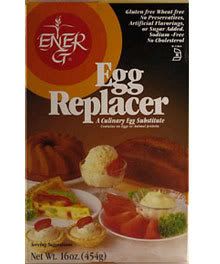
You can also replace 1 egg with any of the following options:
2 to 4 tablespoons of MASHED TOFU
1/4 cup SOFT TOFU mixed with the liquid listed in the recipe
1/4 cup ripe MASHED BANANA, APPLESAUCE, or PRUNE PUREE mixed with 1/2 teaspoon baking powder
1 tablepoon GROUND FLAXSEED mixed with 3 tablespoons water
1 tablespoon WHOLE FLAXSEEDS and 2 tablespoons water processed in the blender until thick and viscous.
1/8 teaspoon BAKING POWDER mixed with the dry ingredients
1 tablespoon CORNSTARCH plus 1 tablespoon instant soymilk powder beaten with 2 tablespoons water
2 tablespoons FLOUR plus 1 1/2 teaspoons vegetable oil plus 1/2 teaspoon baking powder beaten with 2 tablespoons water.
INSTEAD OF MAYONNAISE:
Follow Your Heart VEGENAISE is a totally vegan alternative that tastes just like the real thing. This product is vegetable oil and soy-based. Though this mayo alternative does not contain cholesterol, it is typically high in fat. Alternatively, make your own low-fat SOY MAYONNAISE in just a few seconds in your food processor.
*Recipe on link below
WHOLE-GRAIN ALTERNATIVES
INSTEAD OF WHITE BREAD: (For health)
By choosing from the multitude of WHOLE-GRAIN BREADS you'll be gaining healthy fiber plus more vitamins and minerals from these natural grains. Look for words like "whole grain wheat flour" and "100% whole wheat flour" rather than "enriched wheat flour." Seek out multigrain breads for their wholesome richness in flavor and benefit from the extra nutrition. When reading the nutritional labels, choose breads that have at least three grams of fiber per slice, preferably four or five grams. The higher the fiber content of your food, the better for your digestive tract.
INSTEAD OF REGULAR DURAM WHEAT PASTA: (For health)
Experiment with the many WHOLE-GRAIN PASTAS that may be new to you by discovering those made from whole wheat, quinoa, spelt, rice, corn, buckwheat, and barley. The whole-grain pastas have a higher fiber content as well as more vitamins and minerals. You can use these ALTERNATIVE PASTAS just as you would regular pasta as an entrée, in salads, and in soups such as minestrone, though you will discover that the textures have a little "tooth" to them. When using these pastas as leftovers, in most cases they will need to be rehydrated in hot or boiling water for a minute or two before adding to hot or cold salads or entrées.
INSTEAD OF REFINED GRAIN CEREALS: (For health)
Explore the myriad of CEREALS made from WHOLE GRAINS. You'll notice the fiber content will be higher than those made from refined grains. You will also benefit from a full range of B vitamins lacking in refined grains, especially folic acid, well known for its importance in preventing birth defects such as spina bifida.
Most whole grain HOT CEREALS take no more than five minutes to prepare. Old-fashioned oatmeal makes a great start to the day, and its soluble fiber helps to lower cholesterol naturally. Tasty whole-grain cereals include oats, wheat, buckwheat, barley, brown rice, and rye. When the ingredient list contains the words, "enriched wheat flour," you'll know it's not made from whole grain. Look for the words "100% WHOLE WHEAT.
"
SCOTTISH STEEL-CUT OAT cereals require about 30 minutes to cook. but when you are pressed for time, try this excellent, no-cook breakfast of SCOTTISH STEEL-CUT OATS. Soak a serving portion of the oats overnight in water to cover.
Next morning, drain the water and add one or more of the following: chopped fresh fruits, dried fruits, nuts, flaxseed meal, soymilk, nut milk, rice milk, hemp milk, or oat milk.
Discover an amazing variety of nutritious WHOLE GRAIN COLD CEREALS. Grains that may be new to you might include kamut, quinoa, amaranth, spelt, and millet. These are often combined with wheat, corn, or oats to bring you an array of tasty breakfast cereals. Read the ingredient lists carefully to avoid those cereals containing excess sugar.
INSTEAD OF WHITE RICE:
Discover the mosaic of WHOLE GRAINS that take no longer to cook than white rice, while some may require up to one hour of cooking.
The quick cooking ones, those that cook in 15 to 20 minutes, include BUCKWHEAT (or kasha), BULGUR, BARLEY FLAKES, TEFF, and QUINOA.
BROWN RICE varieties, from long grain Basmati to the short grain glutinous rice to the unique Japonica type, require about 35 to 45 minutes, as do oat groats and cracked wheat.
Polenta (corn grits) requires about 25 to 30 minutes to cook.
Long-cooking grains that require 50 to 60 minutes of cooking include PEARL BARLEY, WILD RICE, WHEAT BERRIES, SPELT BERRIES, and RYE BERRIES.
SNACK ALTERNATIVES
INSTEAD OF UNHEALTHY SNACKS:
Unfortunately, when many people think of snacks, they picture something sugar-sweetened or highly salted. Excess sugar and salt have dire health consequences. Fortunately, there are a multitude of healthier options.
Treat yourself to a piece FRESH FRUIT in season instead of unhealthy fat and calorie-loaded potato or corn chips.
RAW NUTS OR SEEDS in small quantities such as one or two handfuls a day are nutritious and satisfying. Avoid nuts that are roasted in oil--these may contain partially hydrogenated oils, trans fats that may become artery clogging. These trans fats raise LDLs (the bad cholesterol) and even lower the HDLs (the good cholesterol).
Pass on the salted nuts as well. It's easy to consume an excess of salt that contributes to high blood pressure. Salt also disguises the rich flavor of nuts in their natural state. Dry roasted nuts and seeds are delicious with a pleasant crunchiness and enhanced flavor that make a nutritious snack. To dry-roast nuts at home, preheat the oven to 350 degrees (Gas Mark 4), place the nuts on a baking sheet, place it in the oven, and roast for 8 to 10 minutes. Remove the nuts to a dish to cool completely, and they will become crisp.
AIR-POPPED POPCORN is an ideal snack. If you're used to heavily seasoned popped corn, you may appreciate the opportunity to discover the true taste of popped corn without the cover-ups. Many seasoned popcorn varieties contain partially hydrogenated oils and high sodium content.
Commercially made cookies, cakes, and candies may contain eggs, dairy products, and partially hydrogenated oils. Discover the joy of vegan baking without eggs, dairy products, and trans fats. Check out the Vegparadise Bookshelf for an extensive listing of vegan cookbooks.
Choose a NATURAL PEANUT BUTTER, ALMOND BUTTER, or CASHEW BUTTER to spread on celery sticks, endive leaves, whole-grain breads, crackers, banana slices, romaine lettuce leaves, or apple slices. Avoid nut butters with partially hydrogenated oils, sweeteners, preservatives, or salt. The rich flavor of natural nut butters is so rewarding, you won't miss the unnecessary add-ins.
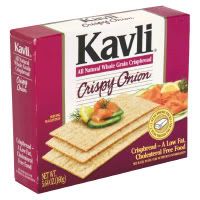
Discover the natural whole-grain flavor and high fiber of RYE-CRISP, RYE-VITA, KAVLI, or WASA crackers instead of commercially made crackers that may contain refined flours and partially hydrogenated oils. These natural whole-grain crackers are made from 100% whole rye.
Top a rye cracker with NATURAL NUT BUTTER and slices of bananas for a delicious snack.
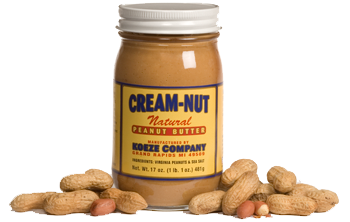
There's always CARROT AND CELERY STICKS, but have you ever tasted the crisp sweetness of fresh, raw ORGANIC SUGAR, is sugar cane that has the water removed or evaporated. This sugar has not gone through the last step in the typical refining process of granulated sugar. That step involves clarifying the sugar over charred animal bones to make it white. While evaporated cane juice may have an off-white color, it is totally vegan and has the same level of sweetness as granulated sugar. Use it just as you would granulated sugar.
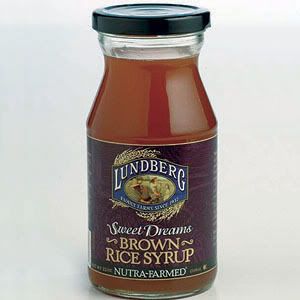
SUCANAT is a light brown sugar alternative that can be used like brown sugar. Made from whole cane juice, SUCANAT contains 100% of the natural molasses. It even stays soft longer than brown sugar.
MAPLE SYRUP is the natural sap taken from maple trees, and then boiled until syrupy. It's an ideal sweetener for pancakes, waffles, smoothies, beverages, and all varieties of baked goods. Use 2/3 cup to 3/4 cup in place of 1 cup of granulated sugar. When baking, add 1/4 teaspoon baking soda for each cup of maple syrup. Purchase U.S. organic maple syrup to avoid illegal formaldehyde pellets some producers add during processing. Once the container is opened, keep it refrigerated.
MAPLE SUGAR (DEHYDRATED MAPLE SYRUP) is in crystal form and makes an excellent sugar alternative. Use cup for cup as you would granulated or brown sugar.
AGAVE NECTAR is a liquid sweetener similar to honey and is extracted from the agave plant, a large succulent with thick fleshy leaves and spiny edges. In recipes, use 25% less AGAVE NECTAR or 3/4 cup in place of 1 cup of granulated sugar. Reduce the recipe's liquid by one third and lower the oven temperature of baked goods by 25 degrees.
BARLEY MALT is a thick honey-like substance made from barley that has gone through a soaking and drying process to extract its sugar. Considered half as sweet as granulated sugar, BARLEY MALT is an ideal substitute when you need a delicate sweetness. Use 1 1/3 cups BARLEY MALT in place of 1 cup of granulated sugar and reduce the recipe's liquid by one-fourth. When baking, add 1/4 teaspoon baking soda per cup of BARLEY MALT.
BROWN RICE SYRUP is similar to barley malt in its degree of sweetness and its thick honey-like texture. This sweetener is not recommended for baking cakes or breads because it creates a soggy texture. Use it for sweetening tea or other hot beverages, smoothies, and blender juices. For granola, pies, cookies, puddings, and fruit crisps, use 1 1/3 cups BROWN RICE SYRUP in place of each cup of grranulated sugar and reduce the recipe's liquid by one-fourth. Add 1/4 teaspoon baking soda per cup of BROWN RICE SYRUP. Refrigerate the container after opening.
MOLASSES makes a good substitute for sugar in baking breads. Because of its pungent, distinctive flavor, it's best used in small amounts. Molasses shines as a beverage called liquid toffee. To make this treat, put 1 teaspoon of molasses into a coffee mug and fill it with boiling water. Stir it well, then taste. If needed, adjust the quantity of molasses. Drink and enjoy.
DATE SUGAR are dehydrated ground dates that are used cup for cup as you would granulated sugar. Date sugar is ideal for apple or other fruit crisps or crunchy toppings, but be careful to prevent burning. This sweetener works best in combination with other sweeteners.
whole dates are ideal to sweeten blender beverages like smoothies and shakes as well as parfaits and fruit mousses. Chop the dates and add them to breads, cookies, granola, fruit salads, and many baked desserts. Combine dates and finely ground nuts in the food processor to create a tasty no-bake pie crust for raw desserts.
DESSERT ALTERNATIVES
INSTEAD OF COOKIES, CAKES, CANDIES:
Treat yourself to a host of delicious FRUITS IN SEASON. The sweetness of fresh fruits will almost always satisfy the craving for that "something sweet" while supplying healthy nutrients as well.
WINTER FRUITS include numerous varieties of crisp apples, juicy pears, and sweet tangerines. Winter is the ideal time to enjoy navel oranges, grapefruits, and pomelos.
SPRING FRUITS that offer a refreshing break include blackberries, strawberries, Valencia oranges, pears, or crisp apples.
YEAR ROUND FRUITS include, kiwis, oranges, pineapples, grapes, and many varieties of bananas such as plantains, burro, manzano, red bananas, and lady fingers.
SUMMER FRUITS include the stone fruits such as peaches, nectarines, plums, and apricots. There are also Bartlett pears, cherries, grapes, mangoes, papayas, pineapples, honeydews, cantaloupes, watermelon, and many other melon varieties.
AUTUMN FRUITS offer a delightful selection of persimmons, pomegranates, and navel oranges that come to market by October.
Sweeter still are DRIED FRUITS. Practically every kind of fruit has been dried and packaged for sale. Look for those that have not been preserved with sulfur dioxide or added sugar. Because dried fruits are very high in concentrated sugar, enjoy them in small servings.
SOY-BASED ICE CREAM comes in a variety of enjoyable flavors. Be sure to read the labels to avoid any unwanted ingredients. Ice cream aficionados may want to invest in an ice cream machine to make their own homemade taste treats.
*****
ACTION FOR ANIMALS
PO Box 45843
Seattle, WA 98145
Action For Animals
http://www. myspace. com/actionforanimals
http://actionforanimals. buzznet. com
http://www. VeganStarterPack. com
"Take sides. Neutrality helps the oppressor, never the victim. Silence encourages the tormentor, never the tormented.
"
Action for Animals is a 501(c)(3) non-profit corporation.
Your donation is tax deductible!
_________________________________________________

Peace
_______________________________________________

